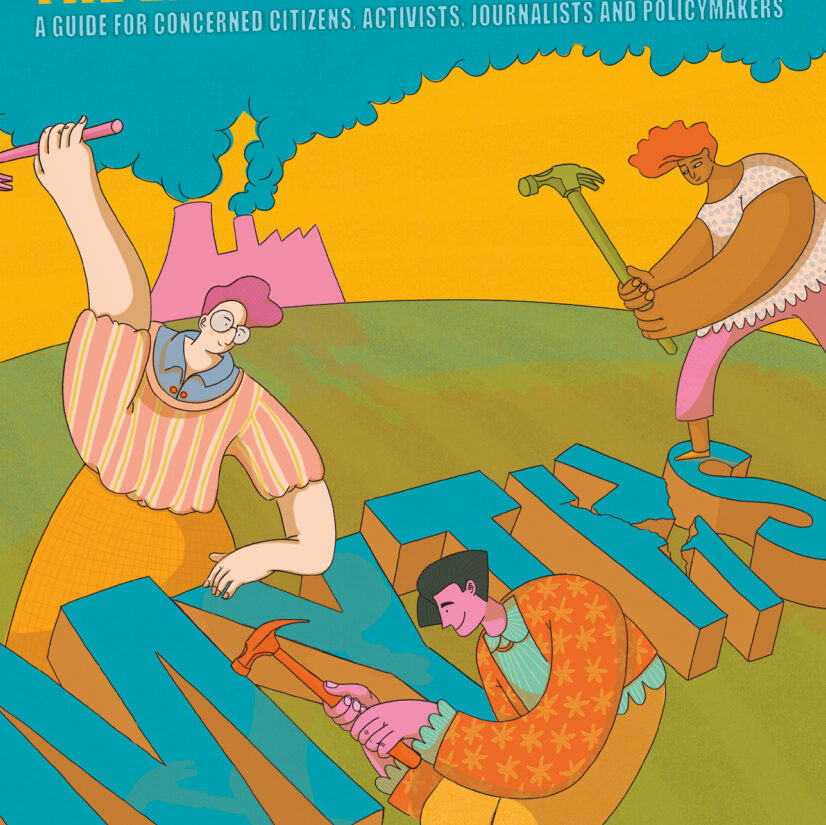
Busting the myths around the Energy Charter Treaty

This week, members of the Energy Charter Treaty (ECT) will hold their annual conference and assess ongoing attempts to reform the controversial agreement. Amidst growing concerns that the ECT undermines urgent climate action, its corporate profiteers, the ECT Secretariat, and others are spewing propaganda, promoting falsehoods about how the treaty attracts clean investment and how its ‘modernisation’ will fix any flaws. A broad coalition, including SOMO, published a guide that cuts through the rhetoric of the ECT’s world of dirty energy, highway robbery, and corporate abuse.
Governments must take urgent action to tackle the climate crisis. Above all, they need to move away from coal, oil, and gas, and towards a renewable energy future. Much of the world’s fossil fuel reserves need to stay in the ground(opens in new window) to prevent runaway climate change.
But governments that phase-out coal, end gas production or stop new oil pipelines to keep fossil fuels in the ground can be held liable for billions in damages under the Energy Charter Treaty (ECT)(opens in new window) . The ECT allows foreign investors in the energy sector to sue governments for decisions that might negatively impact their profits – including climate policies. UK-based oil and gas company Rockhopper, for example, is suing Italy over a ban on new offshore oil drilling(opens in new window) . Finnish/German coal company Fortum/Uniper is threatening to sue the Netherlands (opens in new window) for phasing out c(opens in new window) oal(opens in new window) . Claims take place outside of existing courts, in shadowy arbitration tribunals run by three private lawyers.
Governments have already been forced to pay out enormous sums. Pending ECT claims total around US$28 billion(opens in new window) . The actual figure could be more than twice that amount since pay-out information is publicly available in only 25 out of 52 cases. But US$28 billion is a staggering sum – equivalent to the estimated(opens in new window) annual cost for the entire African continent to adapt to climate change.
Opposition to the ECT is growing rapidly. In October 2020, the European Parliament voted(opens in new window) to end the ECT’s protection for fossil fuels. In November, 280 parliamentarians called(opens in new window) on the European Commission and EU members to “explore pathways to jointly withdraw”. In December, over 200 climate leaders and scientists echoed that demand, calling(opens in new window) the ECT “a major obstacle” to the clean energy transition. Behind the scenes in the Council, EU member states like France, Spain, and Luxembourg, too, have raised the withdrawal option if the ECT cannot conform to the Paris Climate Agreement. Belgium has even asked(opens in new window) the European Court of Justice if the ECT is at all in line with EU law.
But powerful interests want to prevent countries from leaving the ECT – and even expand it to new signatory states. And they will say anything to succeed. Let us guide you through some of their key myths and “alternative facts” so you can easily unpack the spin on the ECT.
Go to the publication Busting the myths around the Energy Charter Treaty
Do you need more information?
-

Bart-Jaap Verbeek
Researcher
Partners
-
CEO – Corporate Europe Observatory

Related content
-
-
Let the energy transition be a fair and truly sustainable transitionPosted in category:Opinion
 Joseph Wilde-RamsingPublished on:
Joseph Wilde-RamsingPublished on: Joseph Wilde-Ramsing
Joseph Wilde-Ramsing -
Overconsumption of transition minerals will cost us the earthPosted in category:Opinion
 Alejandro GonzálezPublished on:
Alejandro GonzálezPublished on: Alejandro González
Alejandro González

